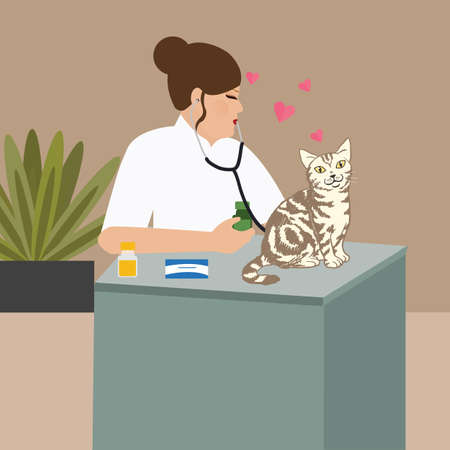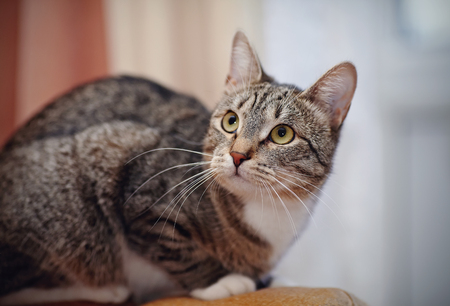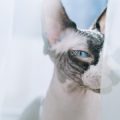Understanding Your Cats Nutritional Needs
If you want to know how much you should feed your cat, the first step is understanding their unique nutritional needs. Unlike dogs or people, cats are obligate carnivores, meaning they require a diet high in animal-based proteins. The right macronutrient balance—primarily protein, with moderate fat and minimal carbohydrates—is essential for their health. It’s also important to remember that a cat’s age, weight, and activity level all play a role in determining their dietary requirements. Kittens need more calories and nutrients per pound than adult cats because they are growing rapidly. Adult cats, especially those who are indoor and less active, typically need fewer calories to avoid gaining excess weight. Senior cats may have different needs based on their health status and metabolism. Understanding these basics helps set the foundation for portion control and making sure your cat gets just the right amount of food for optimal health.
Reading Cat Food Labels
When it comes to determining how much you should feed your cat, understanding how to read cat food labels is crucial. Cat food packaging contains a wealth of information about portion size, nutritional content, and ingredient quality. Knowing how to interpret this data helps you make informed decisions and ensures your feline friend gets a healthy and balanced diet.
Key Sections on Cat Food Packaging
Most commercial cat foods in the U.S. must meet guidelines set by the Association of American Feed Control Officials (AAFCO). Here are some important sections to look for:
| Label Section | What It Tells You |
|---|---|
| Guaranteed Analysis | Shows minimum percentages of crude protein and fat, and maximum percentages of fiber and moisture. |
| Ingredient List | Ingredients are listed by weight, with the first few making up most of the food. Look for real meat as a primary ingredient. |
| Feeding Guidelines | Provides recommended serving sizes based on your cat’s weight and life stage. Use these as a starting point but adjust based on your vet’s advice and your cat’s activity level. |
| Nutritional Adequacy Statement | Indicates if the food is complete and balanced for your cat’s specific life stage (kitten, adult, senior). |
How to Interpret Ingredient Lists
The order of ingredients matters—those listed first are present in the highest quantities. For optimal nutrition, choose foods where high-quality proteins (like chicken, turkey, or salmon) are among the first ingredients. Avoid products with lots of fillers like corn or soy, artificial preservatives, or by-products if possible.
Understanding Portion Recommendations
The feeding directions on packaging provide a helpful guideline, but remember these are averages for cats at a typical activity level. If your cat is particularly active or sedentary, you may need to adjust portions up or down. Always measure out food using an actual measuring cup to ensure consistency and avoid overfeeding.

3. Determining the Right Portion Size
Figuring out how much to feed your cat can feel overwhelming, but understanding portion control is key to keeping your feline healthy. Most adult cats need about 20 calories per pound of body weight each day, but this can vary based on age, activity level, and whether your cat is spayed or neutered. Always start by checking the feeding guidelines on your cat food’s packaging—they’re a helpful baseline, but remember they’re just a starting point.
Calorie Counting Matters
Counting calories may sound tedious, but it’s crucial for preventing obesity and other health issues in cats. Look for the calorie content listed as “kcal/cup” or “kcal/can” on your cat food label. Use this info to calculate how much food matches your cat’s daily needs. For example, if your 10-pound cat needs 200 calories per day and their kibble contains 400 kcal per cup, you should feed them half a cup each day.
Measuring Out Food Correctly
To make portioning easy and accurate, invest in a set of measuring cups or even a kitchen scale for precise amounts. Don’t rely on guessing—overfeeding often happens when pet parents “eyeball” portions. Divide your cat’s daily ration into two or more meals to help with digestion and keep them satisfied throughout the day.
Personalizing Portions for Your Cat
No two cats are exactly alike, so consider factors like breed, age, activity level, and health conditions when deciding on portions. Active kittens and young adults burn more calories than seniors or indoor loungers. If in doubt, check with your vet—they can help tailor feeding recommendations specific to your cat’s unique lifestyle and nutritional needs.
4. Wet vs. Dry Food: Portion Differences
Choosing between wet and dry cat food is more than a matter of preference—it has a real impact on portion control. Each type of food varies in caloric density, moisture content, and recommended serving size. Understanding these differences can help you avoid overfeeding or underfeeding your cat.
Caloric Density and Serving Sizes
Dry food (kibble) is much denser in calories compared to wet food. This means your cat will need a smaller quantity of dry food to meet their daily energy needs, while larger portions of wet food are required for the same calorie count. Here’s a basic comparison:
| Food Type | Average Calories per Cup/Can | Typical Serving Size (per meal) |
|---|---|---|
| Dry Food | 300-500 kcal/cup | 1/4 – 1/3 cup |
| Wet Food | 70-120 kcal/3oz can | 1 – 1.5 cans |
Feeding Frequency Differences
Cats eating dry food can be free-fed (food left out all day), but this can lead to overeating if portions aren’t measured. With wet food, it’s common to serve meals two or three times daily since it spoils faster when left out and helps control intake. Wet food’s high moisture also helps with hydration, which is beneficial for cats prone to urinary issues.
How Food Choice Affects Portion Control
Your choice impacts not just how much to feed, but how often. With dry food, accurate measuring and monitoring are crucial—using a kitchen scale or measuring cup ensures consistency. Wet food requires more frequent servings but may help prevent overeating due to its lower caloric density per serving.
Tip:
No matter which type you choose, always check the label for feeding guidelines and adjust based on your cat’s age, weight, and activity level. Consult your vet for personalized advice, especially if combining both wet and dry foods in your cat’s diet.
5. Signs of Overfeeding or Underfeeding
It’s important to pay attention to your cat’s behavior and physical condition, as these can reveal whether you’re feeding them the right amount. Here are some telltale signs to watch for:
Behavioral Indicators
Overfeeding
If your cat is overeating, you might notice lethargy, less interest in play, and a tendency to beg for food even after meals. Some cats may also become pickier, only eating certain foods or flavors if they know more is coming.
Underfeeding
Cats that aren’t getting enough food may become restless or vocal, especially around mealtimes. They might scavenge for food more frequently, raid the trash, or show increased aggression when hungry.
Physical Signs
Overfeeding
Weight gain is the most obvious sign of overfeeding. You may notice your cat’s ribs and spine are hard to feel under a layer of fat, or their abdomen starts to sag. Dull coat, frequent vomiting, and excessive grooming can also be warning signs.
Underfeeding
A cat that’s being underfed will appear thin, with prominent ribs and spine. Their coat may lose its shine and become patchy. In severe cases, lack of energy and slow wound healing can occur.
Correcting Feeding Habits
If you suspect you’re overfeeding or underfeeding your cat, start by measuring their portions accurately using a kitchen scale or measuring cup. Stick to regular feeding times and avoid free-feeding (leaving food out all day). If your cat needs to gain or lose weight, consult your veterinarian for advice on adjusting portion sizes gradually and safely. Remember, sudden changes in diet can upset your cat’s stomach—make any adjustments slowly over several days.
6. Tips for Managing Feeding Time and Treats
Maintaining your cat’s healthy weight isn’t just about measuring food—it also involves smart meal planning, careful treat tracking, and consistent routines. Here’s how you can take control of your cat’s feeding schedule and make sure those extra calories from treats don’t sneak up on you.
Set a Consistent Meal Schedule
Cats thrive on routine, so try to feed them at the same times every day. Most vets recommend two meals daily—morning and evening. This helps regulate their metabolism and makes it easier for you to monitor their appetite or notice any changes in eating behavior that might signal health issues.
Portion Out Meals in Advance
Use a measuring cup or a digital scale to portion out each meal according to your vet’s advice or the guidelines on your cat food packaging. Pre-portioning meals prevents overfeeding, especially if multiple people are involved in feeding your cat at home.
Track Treat Intake
Treats should be an occasional reward, not a regular part of your cat’s diet. The calories from treats should make up no more than 10% of your cat’s daily caloric intake. Consider using a treat jar with a weekly limit or keeping a tally on your phone to avoid going overboard.
Choose Healthy Treat Alternatives
If your cat loves treats, opt for low-calorie options or use small bits of their regular kibble as a reward. You can even use playtime or affection as positive reinforcement instead of food-based treats to avoid unnecessary calories.
Stick to Feeding Routines
Establishing and maintaining consistent feeding routines helps cats feel secure and makes it easier for you to manage their nutrition. Avoid free-feeding (leaving food out all day), as this often leads to overeating. If you must leave food out, consider using an automatic feeder that dispenses controlled portions at set times.
By being proactive about scheduling meals, carefully monitoring treat consumption, and sticking to routines, you’ll help keep your cat at a healthy weight—and ensure they stay happy and energetic for years to come.


